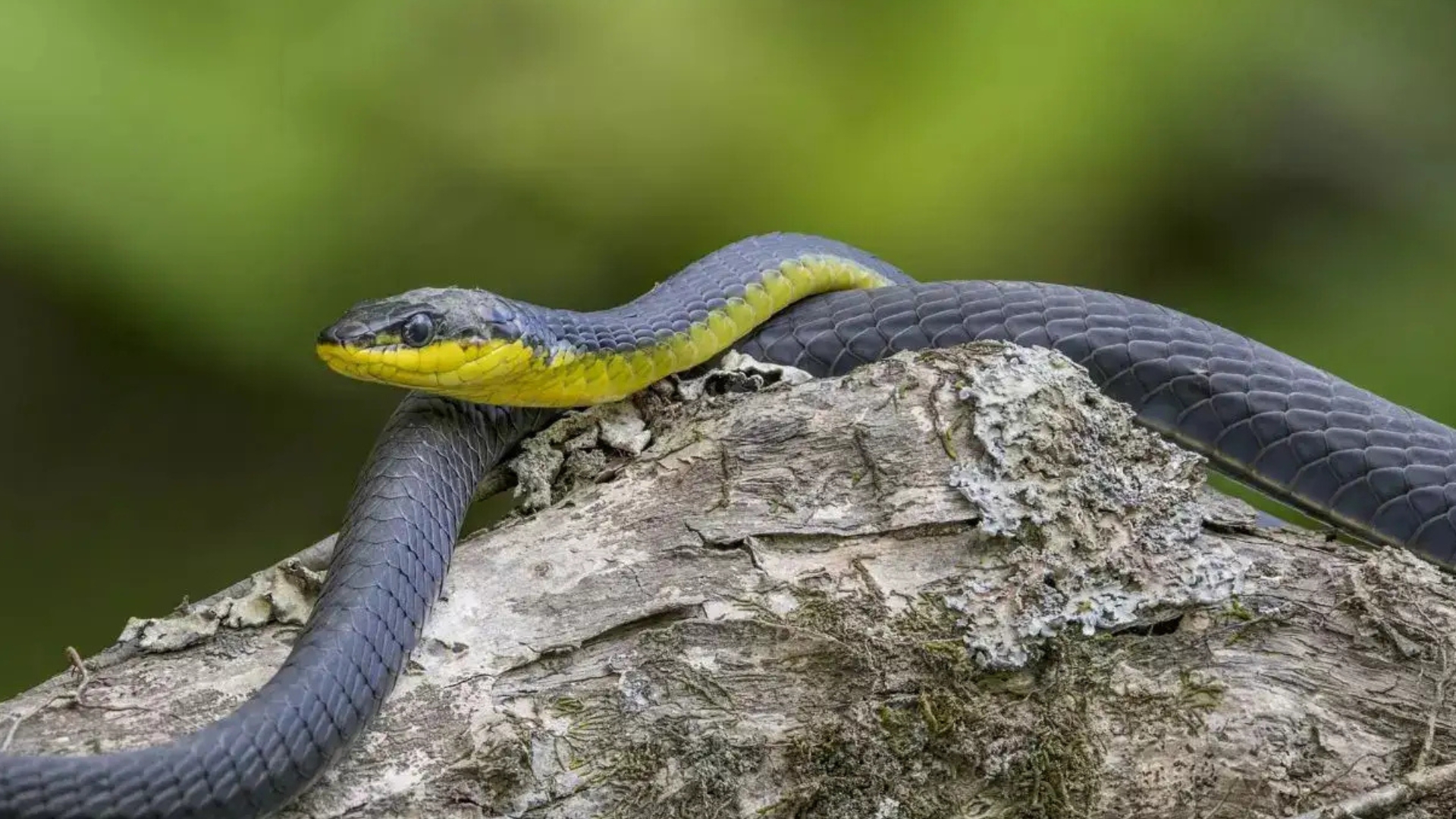In a surprising discovery, scientists have identified a new species of snake on Sudest Island in Papua New Guinea, a 4-foot predator capable of subduing a hawk. Scientist Fred Kraus observed the coal black tree snake, Dendrelaphis anthracina, in a remarkable encounter.
The Discovery: An Odd Predator
Fred Kraus, a renowned expert on the Dendrelaphis genus, made the intriguing finding while conducting fieldwork on Sudest Island. Fred Kraus published his findings in Zootaxa on April 4, 2025, revealing the coal black tree snake’s jet-black color, black eyes, and white chin.
But Kraus’s direct observation of the snake in motion was what really made this species unique. The crew was researching the snake in a variety of environments, from jungles to man-made communities, when they saw an incredible sight: the snake encased a hawk in the middle of an assault, immobilizing it.
This confirmed the snake’s surprising predatory capabilities.
A New Species in the Dendrelaphis Genus
The newly discovered coal black tree snake belongs to the Dendrelaphis genus, a group of tree-dwelling snakes that scientists have poorly understood until now. Kraus discovered this species as the first of four new snake species during his trip to various islands in Papua New Guinea, each with unique characteristics.
Additional New Species of Snakes in Papua New Guinea
Kraus discovered three more, yet unidentified species on three distinct islands in addition to the coal black tree snake:
- The Atra Tree Snake, Dendrelaphis atra, grows up to 4 feet 1 inch and is found on Misima Island, where it is somewhat smaller than the coal black tree snake.
- The matte black appearance of this species distinguishes it from its cousins.
- Dendrelaphis melanarkys (Black Net Tree Snake): This species, found on Rossel Island, is notable for its orange eyes and net-like patterns on its scales, measuring up to 4 feet, 11 inches.
- Kraus discovered Dendrelaphis roseni (Rosen’s Tree Snake) on Woodlark Island. Measuring 3 feet 5 inches, he named the smallest species in honor of his late friend and conservationist, Clark Rosen.
Where They Live
Researchers observed each of these new species in rainforests, gardens, and villages on the islands. Some snakes are found in human-modified environments but still retain their unique ecological niches in the wild.
The Importance of This Discovery
This groundbreaking discovery highlights Papua New Guinea’s incredible biodiversity and the need of preserving its natural ecosystems. The peculiar behaviors of the snakes, especially their predatory interaction with hawks, contribute an interesting chapter to the study of reptiles.
Source: USA Today
